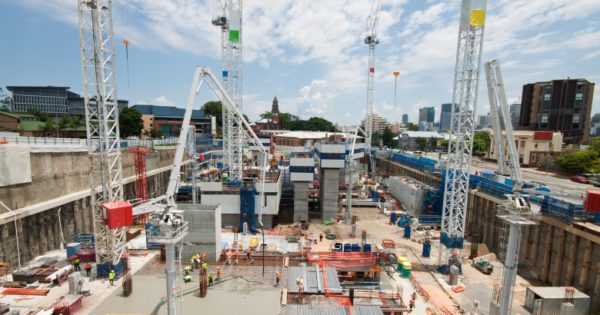A key report by Australia’s infrastructure advisory body has identified almost 500 regional infrastructure gaps across the nation.

Infrastructure Australia released its Regional Strengths and Infrastructure Gaps report on Thursday.
The report identifies key regional industries, asset-based regional strengths and gaps in infrastructure, and sets out challenges and opportunities across the nation’s non-urban areas amid a backdrop of growing regionalisation.
The report, which also provides a state-by-state breakdown, identifies 479 infrastructure gaps including the red hot priority areas of housing, water security, telecommunications, education and skills, and public transport.
“Service quality gaps in Australia’s regions are deeply pronounced and can be defining for communities,” the report says. “Investment in modernising or expanding infrastructure plays a critical role.”
Infrastructure Australia hopes the data contained in the report, which builds on its 2021 Australian Infrastructure Plan, will guide policy makers and government agencies in future planning.
“By identifying and spotlighting priority challenges and opportunities in each region, we hope to encourage governments at all levels to work with industry and the community to identify, develop, and submit proposals to address these gaps,” Director of Policy & Research at Infrastructure Australia Jonathan Cartledge told Government News.
Infrastructure gaps and where they are:
Housing – Illawarra, Tasmania, NT
Water – Orana, Townsville and North West, Tropical North, Barossa
Telecoms – Far West, NT, Yorke and Mid North
Edcation and training – Tasmania, Townsville and North West, Pilbara
Public Transport – Adelaide Metro, Grampians, Sunshine Coast.
Identifying growth areas
Infrastructure Australia says regional areas need to identify priority areas for growth, with regional areas seeing a 200 per cent increase in growth in 2019/20, and the first quarter of 2021 recording the largest internal migration on record.
“The upswing in regionalisation together with the covid pandemic has compounded pressure on already stretched regional infrastructure assets and networks, CEO Romilly Madew says.
“We are aiming to improve information sharing and enable a coordinated, forward-looking view of the challenges and opportunities in Regional Australia. We hope communities embrace the opportunities highlighted in this report and that it becomes a turning point for greater collaboration amongst stakeholders.”
Infrastructure Australia partnered with 48 Regional Development Australia committees to gain insight into community views. Access, quality and cost emerged as the most important factors, the report says.
Leveraging strengths
The report underlines the need to capitalise on existing and emerging regional strengths like gateway ports, education and research, natural resources, cultural heritage, specialised precincts, energy, defence and attractions.
It identifies renewable energy, tourism, social assistance, defence and aerospace, mining and transport among the key indsutries.
Infrastructure Australia says the report may not have considered all the relevant data and is inviting stakeholders to make submissions via the feedback form at infrastructureaustralia.gov.au until April 29.
More information is provided via an interactive map.





This really is such a wonderful resource that youre offering and you give it away for free. I take pleasure in seeing sites that realize the worth of delivering a prime resource for no cost. I really loved reading your post. Thanks!
Thanks for sharing, I like this blog!
IT Infrastructure Management companies in Australia